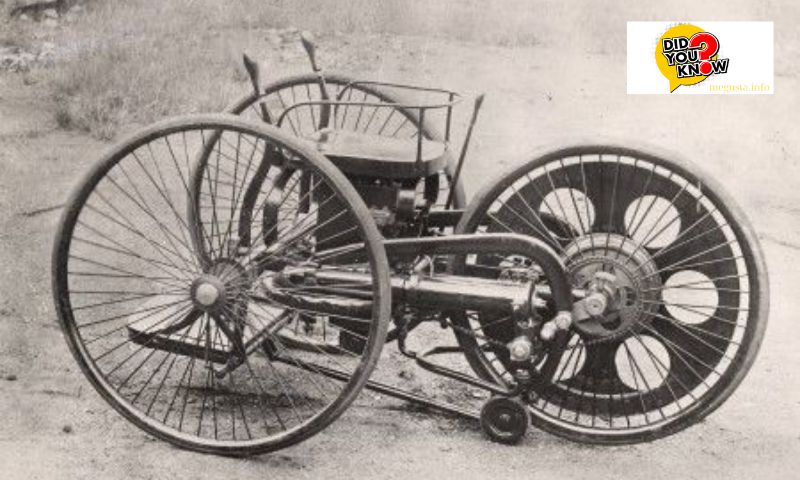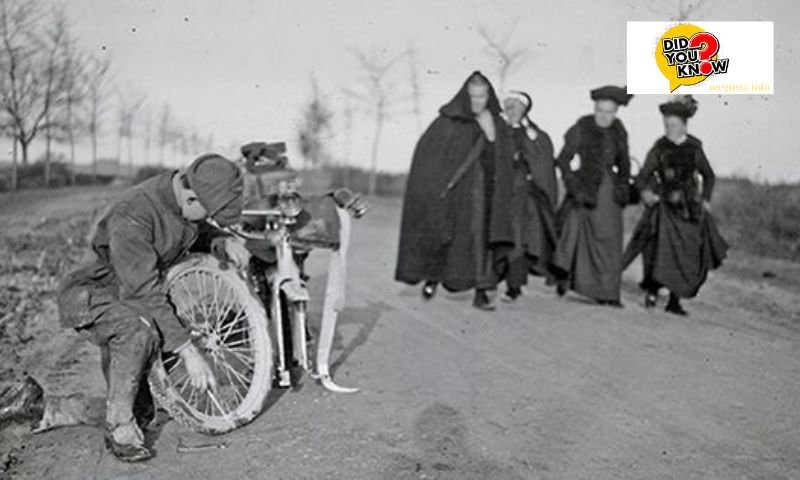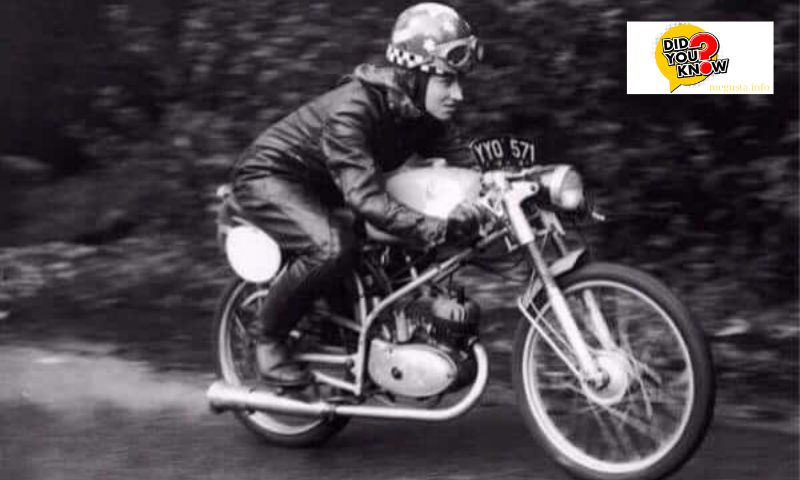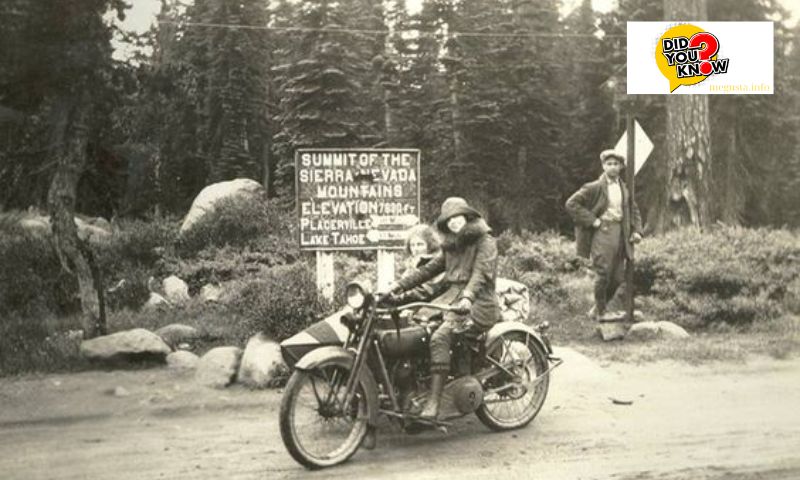The phrase “world’s first motorcycle” evokes images of innovation and revolution in transportation. It represents more than just a vehicle; it symbolizes asignificant milestone in human engineering and mobility. This article from megusta.info delves into the origins, evolution, and enduring legacy of the world’s first motorcycle, exploring its historical context, technological advancements, and impact on modern society.
History of the World’s First Motorcycle

The concept of a motorcycle traces its roots back to the early 19th century when inventors began experimenting with steam-powered and then internal combustion engine-driven vehicles. However, pinpointing the exact moment of the world’s first motorcycle’s creation involves navigating through a series of early prototypes and developments.
One of the earliest contenders for the title of the world’s first motorcycle is the Michaux-Perreaux steam velocipede. Invented by French blacksmith Pierre Michaux and his son Ernest Michaux in the 1860s, this steam-powered vehicle featured a steam engine mounted on a wooden frame with two iron wheels. Although primarily a steam-powered bicycle, it laid the groundwork for future motorized two-wheelers.
In the late 19th century, the development of the internal combustion engine sparked further advancements in motorcycle technology. Gottlieb Daimler and Wilhelm Maybach are often credited with creating one of the earliest gasoline-powered motorcycles in 1885. Their invention, known as the Daimler Reitwagen (riding car), featured a single-cylinder engine mounted on a wooden frame, with two wheels and a crude suspension system. This pivotal creation marked a significant leap forward in motorcycle design, influencing subsequent innovations.
Features and Design
The world’s first motorcycle, whether steam-powered or gasoline-driven, shared common characteristics that distinguished it from earlier bicycles and horse-drawn carriages. These early vehicles typically featured a lightweight frame, two wheels (often with solid rubber tires), a primitive engine, and rudimentary controls. The design prioritized simplicity and functionality, focusing on achieving locomotion through mechanical power rather than human or animal effort.
Over time, motorcycle design evolved with improvements in engine technology, frame materials, and suspension systems. Manufacturers experimented with different configurations, such as the introduction of the first commercially successful motorcycle, the Hildebrand & Wolfmüller, in 1894. This German-made motorcycle featured a two-cylinder engine and a unique frame design, setting a precedent for future motorcycle engineering.
Impact on Transportation

The advent of the world’s first motorcycle marked a monumental shift in personal transportation, ushering in an era of unprecedented mobility and transforming societal norms. These pioneering vehicles, whether propelled by steam or internal combustion engines, revolutionized how individuals traversed distances, offering a level of speed and autonomy previously unimaginable.
Prior to the motorcycle’s emergence, personal transportation largely relied on foot travel, horse-drawn carriages, or bicycles. While bicycles provided a faster alternative to walking, they were limited by human power alone. The introduction of motorcycles represented a leap forward, harnessing the power of engines to propel riders swiftly and efficiently over varied terrain.
As manufacturers honed their designs and production techniques, motorcycles evolved from experimental novelties to practical modes of transport accessible to a broader segment of society. This democratization of transportation had profound implications, empowering individuals from diverse backgrounds with newfound opportunities for travel and exploration.
In urban environments, motorcycles swiftly became indispensable. Their compact size and agility made them ideal for navigating congested city streets, where larger vehicles struggled to maneuver. Workers benefited from their efficiency, using motorcycles for commuting to factories and offices, thereby facilitating economic productivity.
Similarly, in rural communities, motorcycles facilitated connectivity across vast distances. Farmers and ranchers utilized motorcycles to check on crops and livestock spread over expansive fields, enhancing agricultural efficiency. Adventurers and explorers found motorcycles invaluable for accessing remote areas and embarking on journeys that were previously arduous or impossible.
Legacy and Historical Context

The legacy of the world’s first motorcycle extends beyond its technological achievements. It represents a pivotal moment in industrial history, marking the transition from human-powered transportation to mechanized vehicles. The ingenuity of early motorcycle pioneers laid the groundwork for subsequent innovations in automotive and motorcycle engineering, influencing the development of motorcycles as we know them today.
In popular culture, motorcycles have become icons of freedom, adventure, and rebellion. From classic films and literature to motorcycle clubs and rallies, these vehicles continue to captivate imaginations and inspire enthusiasts worldwide. The enduring appeal of motorcycles underscores their cultural significance and enduring legacy in transportation history.
Conclusion
The world’s first motorcycle stands as a testament to human ingenuity, innovation, and the relentless pursuit of progress. From humble beginnings as experimental contraptions to modern marvels of engineering, motorcycles have evolved significantly over the past century. Their impact on transportation, industry, and culture cannot be overstated, shaping the way we perceive mobility and adventure.
As we look to the future, the legacy of the world’s first motorcycle continues to inspire new generations of engineers, designers, and enthusiasts. Whether for practical transportation, recreational enjoyment, or competitive racing, motorcycles remain a symbol of innovation and freedom on two wheels.
In summary, the world’s first motorcycle represents more than just a historical artifact; it embodies the spirit of exploration and the enduring quest for mobility. Its evolution from early prototypes to modern machines mirrors the advancements of society as a whole, reflecting our ongoing journey towards faster, more efficient, and more sustainable forms of transportation.

